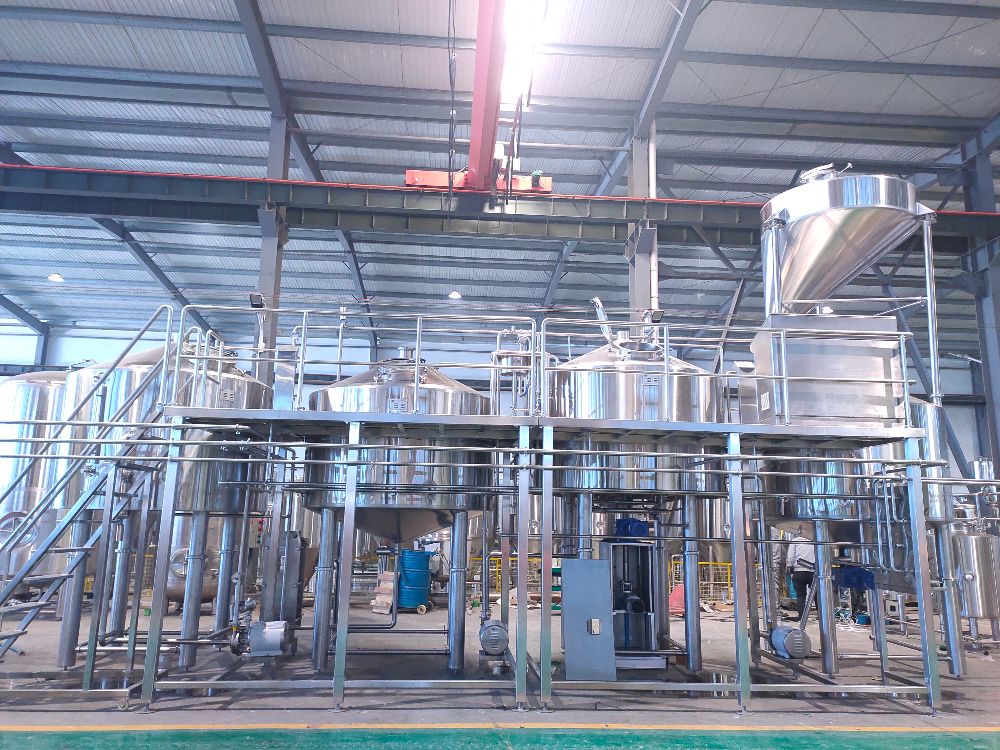Is craft beer brewing equipment suitable for producing non-alcoholic beer
- Sep 20, 2023
- 68
- tiantai
With the popularity of non-alcoholic beer, many of customers asked us whether he can produce non-alcoholic beer with our beer brewing equipment? The answer is: Yes. Producing non-alcoholic beer involves a process similar to brewing regular beer but with some modifications to remove or reduce the alcohol content. Here are the general steps to produce non-alcoholic beer:
Ingredients:
Malted Barley: Use the same types of malted barley as in regular beer production.
Hops: Select the appropriate hop varieties for flavor and aroma.
Water: Use clean and filtered water.
Yeast: Choose a yeast strain that produces minimal alcohol or one that can be deactivated to prevent alcohol formation.
Optional Flavorings: You can add various flavorings, such as fruits or spices, for additional flavor complexity.

Production Steps:
Malting: Start by malting barley, which involves soaking, germinating, and drying the grains. This provides the necessary enzymes for brewing.
Mashing: Mix crushed malted barley with hot water to create a mash. This activates the enzymes that convert the starches in the barley into fermentable sugars.
Boiling: Boil the mash and add hops for bitterness, flavor, and aroma. The boiling process sterilizes the wort and extracts essential oils and resins from the hops.
Cooling: Rapidly cool the boiled wort to a temperature suitable for fermentation.
Fermentation: In non-alcoholic beer production, you have two options:
a. Use a yeast strain that produces minimal alcohol: Choose yeast strains that are known for their low alcohol production, such as certain ale or lager yeasts. Ferment at a lower temperature to further reduce alcohol formation.
b. Deactivate the yeast: After fermentation with regular yeast, you can deactivate the yeast by heating the wort to a temperature that kills the yeast cells (usually around 140°F or 60°C). This process is known as "pasteurization" and halts alcohol production.
Filtration: Use a fine filtration process to remove any remaining yeast cells and solids from the beer. This helps clarify the beer and ensures it remains stable.
Carbonation: Add carbonation to the non-alcoholic beer to achieve the desired level of fizziness. This can be done through natural carbonation, forced carbonation, or a combination of both.
Flavor Adjustments: Adjust the flavor profile of the non-alcoholic beer to match the desired taste. This might involve adding flavorings, sweeteners, or hop extracts.
Packaging: Fill the non-alcoholic beer into bottles, cans, or kegs, and seal them to prevent contamination and preserve freshness.
Pasteurization (Optional): Some non-alcoholic beers undergo pasteurization after packaging to ensure long shelf life.
So, after looking through above description, have you already figured out the production of non-alcoholic beer? NO? So, contact Nicole now to discuss further and customize your beer brewery system to start your production trip. Cheers!
Edited by Nicole
Sales manager | Tiantai beer equipment
Email: [email protected]
Ingredients:
Malted Barley: Use the same types of malted barley as in regular beer production.
Hops: Select the appropriate hop varieties for flavor and aroma.
Water: Use clean and filtered water.
Yeast: Choose a yeast strain that produces minimal alcohol or one that can be deactivated to prevent alcohol formation.
Optional Flavorings: You can add various flavorings, such as fruits or spices, for additional flavor complexity.

Production Steps:
Malting: Start by malting barley, which involves soaking, germinating, and drying the grains. This provides the necessary enzymes for brewing.
Mashing: Mix crushed malted barley with hot water to create a mash. This activates the enzymes that convert the starches in the barley into fermentable sugars.
Boiling: Boil the mash and add hops for bitterness, flavor, and aroma. The boiling process sterilizes the wort and extracts essential oils and resins from the hops.
Cooling: Rapidly cool the boiled wort to a temperature suitable for fermentation.
Fermentation: In non-alcoholic beer production, you have two options:
a. Use a yeast strain that produces minimal alcohol: Choose yeast strains that are known for their low alcohol production, such as certain ale or lager yeasts. Ferment at a lower temperature to further reduce alcohol formation.
b. Deactivate the yeast: After fermentation with regular yeast, you can deactivate the yeast by heating the wort to a temperature that kills the yeast cells (usually around 140°F or 60°C). This process is known as "pasteurization" and halts alcohol production.
Filtration: Use a fine filtration process to remove any remaining yeast cells and solids from the beer. This helps clarify the beer and ensures it remains stable.
Carbonation: Add carbonation to the non-alcoholic beer to achieve the desired level of fizziness. This can be done through natural carbonation, forced carbonation, or a combination of both.
Flavor Adjustments: Adjust the flavor profile of the non-alcoholic beer to match the desired taste. This might involve adding flavorings, sweeteners, or hop extracts.
Packaging: Fill the non-alcoholic beer into bottles, cans, or kegs, and seal them to prevent contamination and preserve freshness.
Pasteurization (Optional): Some non-alcoholic beers undergo pasteurization after packaging to ensure long shelf life.
So, after looking through above description, have you already figured out the production of non-alcoholic beer? NO? So, contact Nicole now to discuss further and customize your beer brewery system to start your production trip. Cheers!
Edited by Nicole
Sales manager | Tiantai beer equipment
Email: [email protected]



.jpg)
